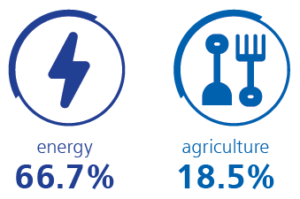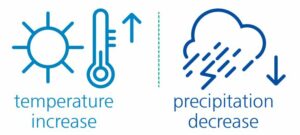
Climate policy development and advancing cooperation with the EU in Armenia

The EU relations with Armenia are based on the Comprehensive and Enhanced Partnership Agreement (CEPA), which entered into full force in March 2021. At the regional level, the Eastern Partnership policy guides the EU’s multilateral engagement with the eastern neighbourood countries, including Armenia. Among other sectors, green connectivity, energy, environment and climate are key priorities for the EU in Armenia. Environment and adaptation to climate change are supported through various actions such as: improving water resources management and transboundary cooperation; mainstreaming environmental goals; developing sounder environmental governance; enhancing environmental awareness; and improving the sustainable management of key natural resources. Support to sustainable energy, energy efficiency and climate resilience has also been strongly provided by the EU, including together with International Financial Institutions.
-
-
 2014
2014
- Strategic Program of Prospective
Development 2014-2025
- Strategic Program of Prospective
 2015
2015
- INDC 2015-2050
- COP21 Paris Agreement
- Pledge to Sustainable Development
Agenda 2030
 2016
2016
- Stakeholder consultation for National
Adaptation Plan (NAP) - 1st Biennial Update Report submitted to
the UNFCCC
- Stakeholder consultation for National
 2017
2017
- Ratification of Paris Agreement National Strategy on Disaster Risk
Management - Energy Community Secretariat assistance
- Ratification of Paris Agreement National Strategy on Disaster Risk
 2018
2018
- Comprehensive and Enhanced
Partnership Agreement (CEPA) with EU CEPA Roadmap - 2nd Biennial Update Report to the UNFCCC
- NDC Partnership
- Comprehensive and Enhanced
 2019
2019
- EU4Climate launched
 2020
2020
- 4th National Communication
to the UNFCCC
- 4th National Communication
 2021
2021
- Updated NDC 2021-2030
- 3rd Biennial Update Report to the UNFCCC
- National Adaptation Plan and List of Measures for 2021-2025
- Upgraded status of the Inter-agency Coordinating Council for Implementation of Requirements and Provision of the UNFCCC established in 2012
 2022
2022
- National Programme on Energy Saving and Renewable Energy for 2022 to 2030
- Draft NDC Implementation Plan, Financing Strategy & Investment Plan
- Draft LT-LEDS of Armenia
- Draft Concept for Climate Law of Armenia
 2023
2023
- Finalised LT-LEDS of Armenia
- Draft Climate Law of Armenia
-
EU4Climate key policy interventions and expected impact


EU4Climate in Armenia
Result areas and timeframe in Armenia
|
RESULT AREAS |
2019 |
2020 |
2021 |
2022 |
||||||||||
|
|
Q3 |
Q4 |
Q1 |
Q2 |
Q3 |
Q4 |
Q1 |
Q2 |
Q3 |
Q4 |
Q1 |
Q2 |
Q3 |
Q4 |
|
NDC |
|
|
|
|
|
|
|
|
||||||
|
Long-term LEDS |
|
|
|
|
|
|
|
|
|
|
|
|
|
|
|
MRV System |
|
|
|
|
|
|
|
|
|
|
|
|
|
|
|
EU Climate Acquis |
|
|
|
|
|
|
|
|
|
|
|
|
|
|
|
Climate mainstreaming |
|
|
|
|
|
|
|
|
|
|
|
|
|
|
|
Climate investment |
|
|
|
|
|
|
|
|
|
|
|
|
|
|
|
Adaptation planning |
|
|
|
|
|
|
|
|
|
|
|
|
|
|
Result areas and timeframe in Armenia

Full country profile can be downloaded here.






